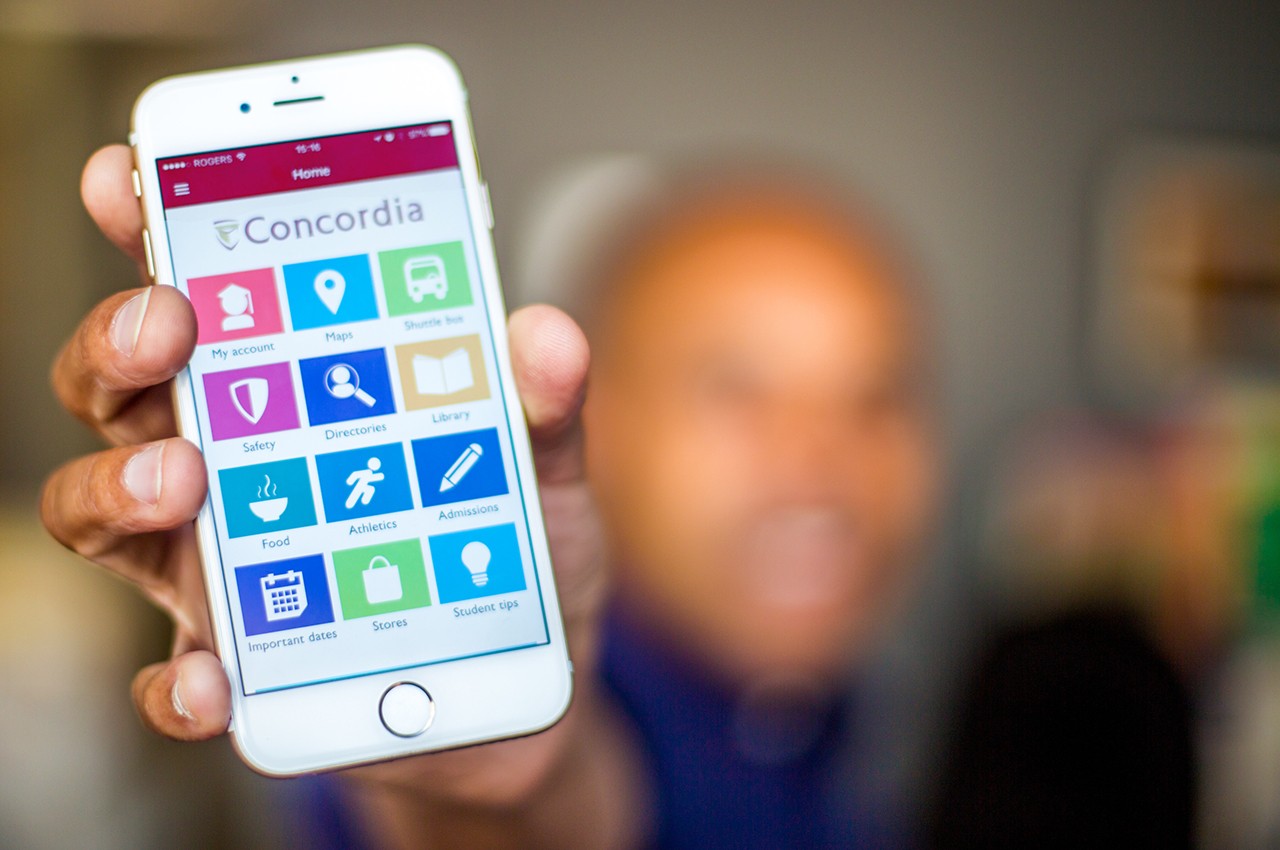Building the digital campus

From mobile apps to IT security enhancements, Concordia’s IITS department is the system behind the scenes that aids in the smooth functioning of the university. As we become more dependent on technology in the day-to-day functioning of classrooms, offices and everyday life, IT Services are essential in providing everything from simple support to integrating new technologies and processes.
Mobile technology
The university officially launched the Concordia App at the beginning of the 2017-2018 academic year. Since then, Institutional Technology Services (IITS) has continued to develop the app to better meet the needs of the Concordia community.
“We wanted to enhance the student experience at Concordia and provide the community with all the essential information they need at the touch of a finger,” says Marc Denoncourt, IITS associate vice-president and CIO.
A collaborative effort between IITS and University Communication Services (UCS), the app was designed to allow students to access their class schedules and grades instantly. It also allows them to consult campus maps, plan shuttle bus trips, connect with the library, react to emergencies and figure out what and where to eat. There is also a tips section that offers advice on everything from managing money and health to campus life.
“Within the first week of the app’s release, it was downloaded 3,000 times. A little over a year later we have over 7 million page views, 1,4 million launches and 60.6% of the student population uses it regularly,” says Denoncourt, who mentions that IITS and UCS are continually monitoring feedback to improve features and determine even better ways to meet the needs of Concordia’s 50,000+ students.
Cybersecurity check
As technology continues to embed itself into our everyday lives, so does the inherent security risks of the cyber world. IITS hopes to help mitigate these risks with a stronger communications strategy.
“In addition to educating the community about cyber security threats and how to stay safe, we’ve also begun to alert people to large scale global threats like WannaCry,” says Denoncourt, who wants to begin providing further awareness to the community about how to stay safe online.
Throughout the year, IITS sought to raise awareness about phishing and other cybersecurity issues through the continuation of an ongoing IT security campaign.
An evaluation of the Concordia community’s ability to identify dodgy digital communication is also ongoing to pinpoint how the university can be better prepared and strengthen communications tactics.
“Our end goal is to keep the Concordia community safe from IT security threats, but also raise awareness and provide tips on what individual users should do. It’s really important that people know how to protect their information,” says Denoncourt.
The digital campus
“We invest in technology to improve the student experience year after year, expanding our wireless network infrastructure. The Webster Library is a good example where we increased dramatically our Wi-Fi coverage and capacity.”
Behind digital networks remains the need for reliable hardware. For that reason, IITS also undertook an important upgrade of Concordia’s network architecture. The project involved redesigning large parts of the network and replacing core components and connections. Despite the scale of the work, the team managed to get it all done with minimal service disruptions.
“We made a number of security enhancements to network and emails services in the fall and continued to add more wireless access points in students areas and annexes on the Sir George Williams campus,” says Denoncourt.
In addition to improvements on the backend of Concordia’s infrastructure, IITS also updated computer workstations and audio-visual equipment in 70 classrooms and labs.
“As part of our IT asset management program, and in partnership with the faculty, we replaced over 650 computers in teaching labs. This was part of an overall program to replace about 2000 computers.”
Concordia’s Digital Strategy
In 2016, as part of the university’s discussion on the Strategic Directions, Denoncourt proposed that senior management create a formal digital strategy initiative. By 2017-2018, this transformed into a partnership with the Office of the Provost. It marked a turning point that lead to the establishment of the Digital Strategy. Denoncourt is confident that the positive impact of the initiative will be felt for years to come.
“We are always striving to meet the needs of the community, providing a tool-set that fosters more collaborative and next-gen learning.”



